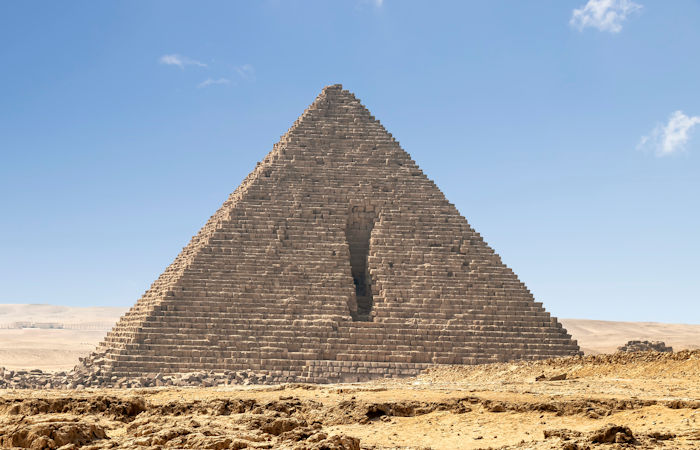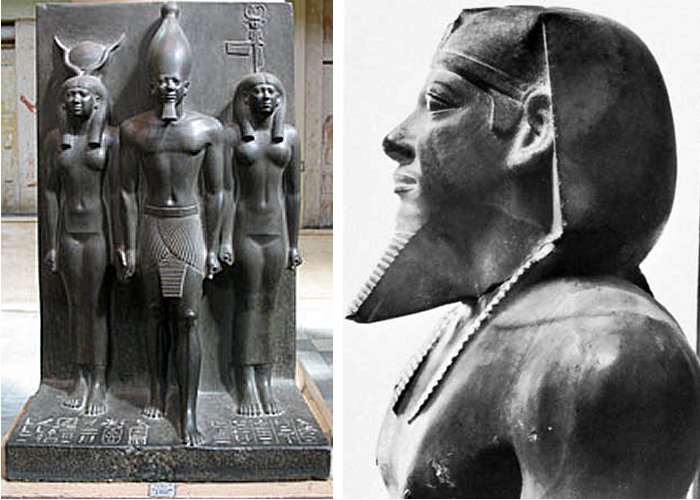Mysterious Pyramid Of Menkaure Remains An Ancient Puzzle
Ellen Lloyd - AncientPages.com - Pyramids are frighteningly anonymous structures.
Pharaohs built huge and well-constructed pyramids, tombs, and temples to glorify themselves and to be remembered after death, but their bodies were never inside these structures.
The Pyramid of Menkaure is the smallest of the three main Pyramids of Giza, located on the Giza Plateau in the southwestern outskirts of Cairo, Egypt. Credit: Adobe Stock - Alfredo
In none of them the bodies of builders or rulers were found, and when they were occasionally found, it turned out to be "very young" and had no connection to Egypt's ancient times.
The Old Kingdom stone pyramids were never actually ‘real’ tombs. The 19th-century so-called 'tomb theory' was only invented to replace earlier theories suggesting the pyramids as storehouses for grain or repositories of sacred measurements of the planet.
So for what purpose were these impressive gigantic structures built?
In fact, no one, even Sir William Flinders Petrie, the earliest authority on the pyramids of Giza, had any idea about it.
Isn't it strange that 'tens of millions of stone blocks used in Egypt’s large pyramids construction, from Meidum in the south to Abu Rawash in the north, and in no place is the name of their builders inscribed, except for a single quarry mark of red ochre paint in the Great Pyramid,' (Malkowski, Ancient Egypt 39,000 BC).
Left: Menkaure with Hathor on his right, and nome figure on his left; Right: Menkaure, detail of an alabaster statue from Giza; in the Egyptian Museum, Cairo Courtesy of the Egyptian Museum, Cairo; photograph, Hirmer Fotoarchiv, Munich
This single quarry mark 'was possibly forged by Richard Howard-Vyse under the pressure of competition with another archaeologist, the Italian Count Caviglia.'
Despite the claim that the pyramid was a tomb, several Egyptologists do recognize that the intent of the pyramid still remains a mystery.
Mysterious Pyramid of Menkaure
The 4,300-year-old pyramid of Menkaure, the smallest of the famous trio at Giza (some 200 feet lower than the other two), is now open to the public after the completion of its renovation.
The pyramid of Menkaure (Mycerinus) measures 356 feet (108 meters) along each side and some 215 feet (65 meters) in height and an angle of 51 degrees. It was built to serve as the tomb of the fourth dynasty Pharaoh Menkaure (2530 BC.-2500 BC.)
This pyramid is also very anonymous. We do not know much about Menkaure.
Researchers discovered an empty basalt sarcophagus, an anthropoid coffin lid made of wood, and some bones. These bones, along with the coffin, were later proved to be dated from the early Christian era and had no connection to Pharaonic times.
On the other hand, the basalt sarcophagus could have belonged to Menkaure.
Unfortunately, nobody had the opportunity to examine it because it had been lost at sea when the ship on which Vyse sent it to England had sunk off the coast of Spain.
Since it was a matter of record that the sarcophagus had been found empty by Vyse, it was once again assumed tomb robbers must have removed the pharaoh's body.'
This 'robbery theory' was only supported by 'evidence' of the missing mummies and grave goods.
The lack of bodies in the pyramids and the absence of decorations and inscriptions in countless galleries, chambers, corridors, and passageways are also evident.
The same is true regarding all three Giza pyramids. Not a single word - praising the pharaohs - has been inscribed on the pyramids' walls.
Other burial places of ancient Egypt have beautiful decorations, paintings, and inscriptions referring to the ritual spells and invocations indispensable for the deceased on his journey toward eternal life.
Nothing like that can be found in Giza's trio, and that's because these pyramids were not built to serve as tombs at all.
The sixth ruler of the 4th dynasty, Menkaure, built himself a pyramid one-tenth the size of Khafre's. And unlike the other Great Pyramids, whose walls were made of limestone, Menkaure's pyramid was covered with granite on the bottom levels and in the burial chamber—a costlier, more difficult stone to work with.
Menkaure died unexpectedly, and work on his pyramid complex was abandoned. Later, Menkaure's heir, Shepseskaf, the sixth and last pharaoh of the 4th dynasty of Egypt during the Old Kingdom, later completed the complex using mud brick.
"Menkaure’s son and successor, Shepseskaf, used mud brick to complete the Mortuary and Valley Temples, all of the subsidiary pyramid temples, the Causeway, and probably the Enclosure Wall. A stele found in eight pieces in the portico of Menkaure’s Mortuary Temple reads:
“Under the Majesty of the King of Upper and Lower Egypt, Shepseskaf, the Horus, Shepsesy-khet, in the year after the first census of the large and small cattle, he made it as his monument for his father, the King of Upper and Lower Egypt [Menkauwra].” 1
Updated on March 5, 2024
Written by Ellen Lloyd – AncientPages.com
Copyright © AncientPages.com All rights reserved. This material may not be published, broadcast, rewritten or redistributed in whole or part without the express written permission of AncientPages.com
Expand for referencesReferences:
- Rigano, Ch. Pyramids of the Giza Plateau
Metropolitan Museum of Art, Egyptian Art in the Age of the Pyramids
A. Sutherland - Pharaoh Menkaure – Egyptian Ruler Who Tried To Outsmart Fate - AncientPages.com
More From Ancient Pages
-
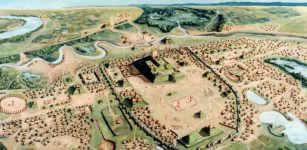 Story About Cahokia’s Lost Civilization Is Wrong – Archaeologist Says
Archaeology | Feb 14, 2020
Story About Cahokia’s Lost Civilization Is Wrong – Archaeologist Says
Archaeology | Feb 14, 2020 -
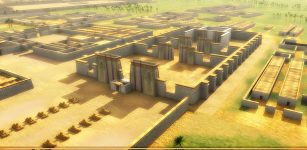 Ancient Egyptian Capital Tell El-Amarna Mapped Through Satellite Imagery System
Civilizations | Sep 11, 2015
Ancient Egyptian Capital Tell El-Amarna Mapped Through Satellite Imagery System
Civilizations | Sep 11, 2015 -
 Forbidden Knowledge: Secret Ancient Gates Of The Shining Ones – The Beginning – Part 1
Featured Stories | Jul 12, 2019
Forbidden Knowledge: Secret Ancient Gates Of The Shining Ones – The Beginning – Part 1
Featured Stories | Jul 12, 2019 -
 Tooth Enamel Reveals Life Histories Of Early Humans
Archaeology | Jan 16, 2023
Tooth Enamel Reveals Life Histories Of Early Humans
Archaeology | Jan 16, 2023 -
 Kadıkalesi Castle Ancient Ruins: Female Skeleton Unearthed At An Archaeological Dig
Archaeology | Jan 9, 2023
Kadıkalesi Castle Ancient Ruins: Female Skeleton Unearthed At An Archaeological Dig
Archaeology | Jan 9, 2023 -
 Movie Stars’ Creepy Encounters With The Unexplained
Featured Stories | Oct 28, 2019
Movie Stars’ Creepy Encounters With The Unexplained
Featured Stories | Oct 28, 2019 -
 3,800-Year-Old Wall Relief Created By Ancient Caral People Unearthed In Peru
Archaeology | Aug 28, 2018
3,800-Year-Old Wall Relief Created By Ancient Caral People Unearthed In Peru
Archaeology | Aug 28, 2018 -
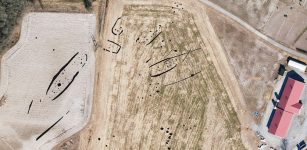 60-Meter Longhouse Discovered Near Viking Ship At Gjellestad, Norway
Archaeology | Dec 6, 2021
60-Meter Longhouse Discovered Near Viking Ship At Gjellestad, Norway
Archaeology | Dec 6, 2021 -
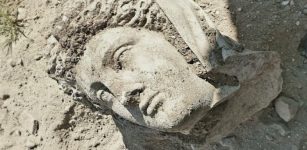 3rd-Century Statue Discovered In Ancient City Of Perge, Antalya, Turkey
Archaeology | Jul 28, 2020
3rd-Century Statue Discovered In Ancient City Of Perge, Antalya, Turkey
Archaeology | Jul 28, 2020 -
 On This Day In History: Parachute Jump From 1,000 m Above Paris Is Recorded – On Oct 22, 1797
News | Oct 22, 2016
On This Day In History: Parachute Jump From 1,000 m Above Paris Is Recorded – On Oct 22, 1797
News | Oct 22, 2016 -
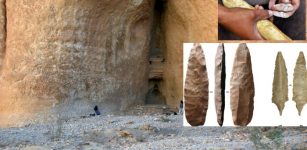 Independent Invention: Iconic Native American Stone Tool Technology Discovered In Arabia
Archaeology | Aug 6, 2020
Independent Invention: Iconic Native American Stone Tool Technology Discovered In Arabia
Archaeology | Aug 6, 2020 -
 Bes: Egypt’s Intriguing Dwarf God Of Music, Warfare And Protector Against Snakes, Misfortune And Evil Spirits
Egyptian Mythology | Jul 31, 2016
Bes: Egypt’s Intriguing Dwarf God Of Music, Warfare And Protector Against Snakes, Misfortune And Evil Spirits
Egyptian Mythology | Jul 31, 2016 -
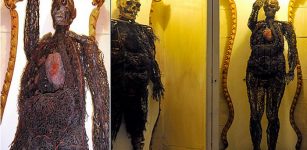 Incredible Anatomical Human Machines – Two Fleshless Bodies Mystery
Featured Stories | Jul 24, 2018
Incredible Anatomical Human Machines – Two Fleshless Bodies Mystery
Featured Stories | Jul 24, 2018 -
 Countless Artifacts, Structures And Roads Discovered In Ancient City Of Aigai, Turkey
Archaeology | May 16, 2022
Countless Artifacts, Structures And Roads Discovered In Ancient City Of Aigai, Turkey
Archaeology | May 16, 2022 -
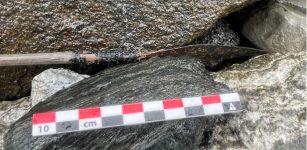 Arrow Pre-Dating The Vikings Discovered After Being Lost In The Ice For 1,500 Years
Archaeology | Aug 25, 2022
Arrow Pre-Dating The Vikings Discovered After Being Lost In The Ice For 1,500 Years
Archaeology | Aug 25, 2022 -
 Mysterious Ancient Underwater Structure Beneath MacDonald Lake Reveals Traces Of A Lost Civilization In Ontario
Civilizations | Nov 15, 2018
Mysterious Ancient Underwater Structure Beneath MacDonald Lake Reveals Traces Of A Lost Civilization In Ontario
Civilizations | Nov 15, 2018 -
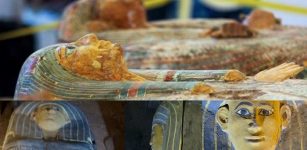 Three 3,500-Year-Old Painted Wooden Coffins Discovered In Luxor, Egypt
Archaeology | Dec 3, 2019
Three 3,500-Year-Old Painted Wooden Coffins Discovered In Luxor, Egypt
Archaeology | Dec 3, 2019 -
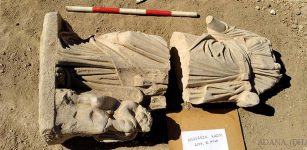 Statue of Goddess Hygieia And Eros Unearthed in Ancient City of Anavarza, Southern Turkey
Archaeology | Dec 7, 2017
Statue of Goddess Hygieia And Eros Unearthed in Ancient City of Anavarza, Southern Turkey
Archaeology | Dec 7, 2017 -
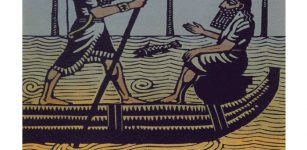 Missing Lines From Epic Of Gilgamesh Shed New Light On Humbaba
Artifacts | Oct 9, 2015
Missing Lines From Epic Of Gilgamesh Shed New Light On Humbaba
Artifacts | Oct 9, 2015 -
 Did Our Ancestors Know About Artificial Intelligence?
Ancient Technology | Sep 2, 2015
Did Our Ancestors Know About Artificial Intelligence?
Ancient Technology | Sep 2, 2015

